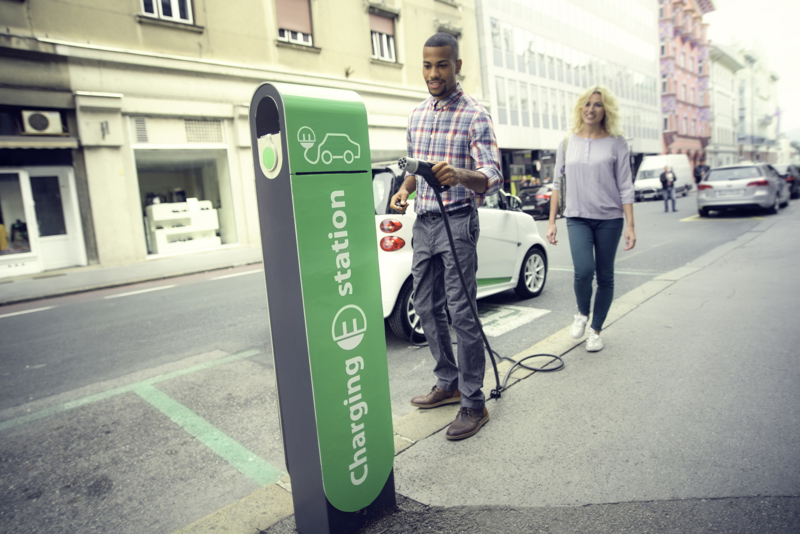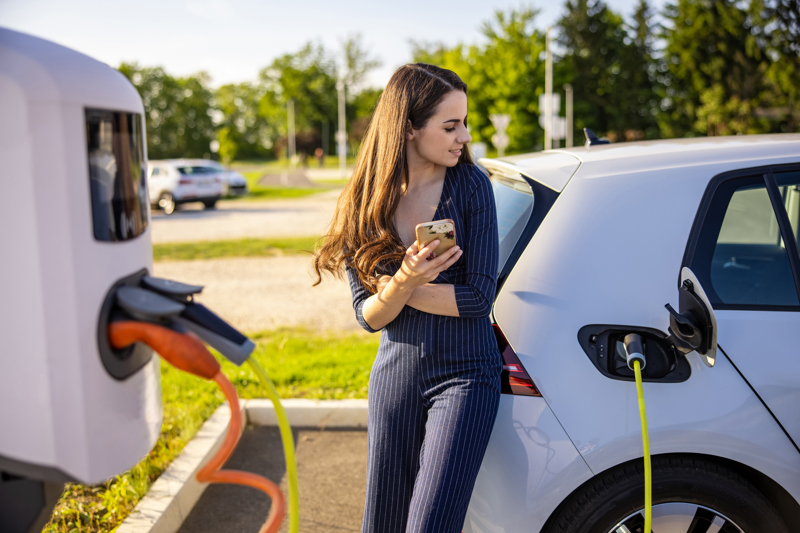This feature originally appeared in the June 2022 edition of Fleet News. Click here to read the article in the digital issue of the magazine.

A comprehensive and reliable public charging infrastructure will be the backbone to a successful transition to an electric fleet for many organisations.
While some will be able to manage perfectly fine with depot or home charging, or a mix of the two, this will not be possible for many.
This may be because they do not have the ability to provide workplace charging, or drivers may not have off-road parking which would enable them to have their own home wallbox.
The rapid charging network will also be critical for company vehicle drivers who undertake longer journeys and need to charge on the go.
However, while the public infrastructure is growing rapidly it still has a long way to go before it is ready to cope with mass electric vehicle (EV) adoption.
In this feature we look at the challenges facing public infrastructure and what is being done to overcome them.
1 Number of charge points
Predictions for the number of public electric vehicle (EV) charge points the UK will need to meet mass electrification of the vehicle parc vary wildly.
However, in its Taking Charge: The Electric Vehicle Infrastructure Strategy report, the Government has predicted the UK will probably need at least 300,000 by 2030.
“No one really knows how many charge points we need,” says Richard Bruce, director of transport decarbonisation at the Department for Transport (DfT).
“If they say they know, they’re wrong, because if you change the assumptions around the vehicle battery, about the charging behaviour, about the proportion of vehicles that get charged at home or on the street as opposed to rapid charge points, it completely changes.”
As of the end of May 2022, Zap-Map reports there were just over 32,000 devices with almost 54,000 connectors.
Of these, 1,658 are ultra rapid and 4,200 are rapid devices (with a combined total of 12,881 connectors).
“The overall number has gone up by 35% in the past 12 months,” Bruce adds. “If we keep going up by that percentage each year then we will get there, but 300,000 is a lot of charge points compared with where we are now.”
Kevin Welstead, sector director EV at SSE Enterprise Utilities, describes the progress needed ahead of 2030, when new conventional petrol- or diesel-powered cars and vans will no longer be sold, to be a “hard slog”.
“The EV charging infrastructure is critical national infrastructure,” he adds.
“We’ve got to go at this like we went at fibre broadband otherwise the backbone just won’t be there by 2030.”
Meanwhile, public charge point operator Liberty Charge believes the Government’s commitment of almost £1.5 billion for rapid and transit charge points across the UK equates to just half of what it will actually cost to install 300,000 public chargers.
2 Geographical spread of charge points
Significant regional disparities in deployment of EV charge points will need to be addressed.
For example, Government statistics show that in London there are 80 public charging devices per 100,000 of population. In Yorkshire and the Humber there are 20.
This creates a chicken and egg situation with potential EV purchasers, at both individual and company fleet level, being reluctant to buy until there is more visible infrastructure.
“Certainly, some areas are going a lot faster than others,” says the DfT’s Richard Bruce. “There’s a real thing around a north-south split.”
Simon McGlone, senior planning and strategy officer at Transport for the North, says there are around 28 charge points per 100,000 population in the north compared with the UK average of 34.
“EV registrations are also slightly behind the national average: the charging infrastructure really is one of the blockers to that,” he adds.
To tackle this, Transport for the North has launched a regional steering group bringing together a number of stakeholders and energy sector organisations.
The Government says it will use its £500 million local infrastructure support programme, which includes the £450m Local EV Infrastructure (LEVI) Fund and the On-street Residential Chargepoint Scheme, to “drive innovative new approaches to deploying local charge points at scale”.
“The £500m will be spent to ensure provision right across England with full consideration given to the spatial disparities set up in the Levelling Up White Paper,” adds its Taking Charge strategy.
| Area | Public charging devices per 100,000 of population | Public rapid charging devices per 100,000 of population |
| United Kingdom | 34 | 6.4 |
| Great Britain | 35 |
6.5 |
| England | 34 | 6.3 |
| North-east | 32 | 6.9 |
| North-west | 21 | 4.7 |
| Yorkshire and the Humber | 20 | 6 |
| East Midlands | 24 | 6.2 |
| West Midlands | 22 | 6.5 |
| East of England | 22 | 5.4 |
| London | 80 | 6.5 |
| South-east | 33 | 7.7 |
| South-west | 29 | 6.4 |
| Wales | 27 | 3.6 |
| Scotland | 43 | 11 |
| Northern Ireland | 17 | 1.1 |
Source: Department for Transport
3 Finding the right mix
While the Government expects the vast majority of EV drivers to do most of their charging at home overnight, public charge
points are needed for two main purposes: to enable long-distance journeys and support those without off-street parking.
However, the required mix of rapid charge points and on-street units is not clear, with the Taking Charge report saying this is down to rapid developments in battery and charging technology, as well as consumer preferences about where and when people would like to charge are not known.
Despite this, it is clear a wide network of rapid chargers will be needed. To help develop this, the Government has launched a £950 million rapid charging fund to support the roll-out of at least 6,000 high-powered charge points across England’s motorways and major A-roads by 2035.
“We will ensure that every motorway service station has at least six rapid chargers by the end of 2023 with some having more than 12,” it says.
“There will be more than 6,000 highpowered chargers along our strategic roads by 2035.
“We will consult on mandating that service area operators and large fuel retailers must meet minimum charge point numbers at specific sites, and at increasing levels over a period of time, to address both actual and perceived demand.”
Richard Bruce, of the DfT, adds: “The private sector has done loads of stuff already on the A-roads and motorways: in the past 30 days; almost 260 rapid charge points have opened in the UK with no subsidies.
“However, there is an issue about getting enough juice into remote areas and if you need to open up the grid connection to it, that is quite expensive.”
The Government has also pledged £500m, including the £450m LEVI fund, to improve on-street charging provision.
“This will help build business cases to help people to roll-out on-street charging at a massive scale and get the unit cost really low
so there’s a compelling offer for consumers who haven’t got the benefit of a driveway,” says Bruce.
“Otherwise you might end up in a sort of charging apartheid where people with driveways get to charge at Economy 7 at 2am and the people who don’t have to go to their local rapid charge point and pay multiple times the cost to charge their car.”
The Government has also pledged to put an obligation on local authorities (subject to consultation) to develop and implement local charging strategies.
These strategies should identify how to provide affordable, convenient charging for residents and businesses (including fleets and visitors) without causing pavement disruptions that could discourage walking and cycling.
4 Planning issues
Planning arrangements to install public charge points can also be complex, with infrastructure installers sometimes needing multiple permissions, consents and licences for schemes.
This adds time and cost to deployment and, in some cases, prevents charge points being installed altogether.
“Over the past 12 months we’ve been actively looking for land where we think planning is going to go swimmingly or where there is permitted development because this is where we’ve seen our biggest challenges,” says SSE Enterprise Utilities’ Welstead.
“Believe it or not, we’ve had three EV hubs where planning has been refused. We were actually shocked.
“The feedback from one of the heads of planning at one of the local authorities we were working with at the time was that he didn’t want any quiet petrol stations in his area.
“We need to find a way of unlocking the planning.”
In its Taking Charge strategy, the Government says it will address barriers slowing down private sector deployment of charge points.
It will consult on measures to make Traffic Regulation Orders – part of the process toinstall on-street charge points – more straightforward.

5 Reliability/Ease of use
The Government has a stated ambition of making charging an EV as easy as refuelling a petrol or diesel car.
Historically, this has not been the case, with the consumer experience being “extremely poor for too long”, says Richard Bruce, of the DfT.
This is because of users needing multiple apps or smartcards to use different networks, while reliability has also been an issue with drivers not knowing if charge points will be working before they arrive at one.
“There’s lots of problems, all of which we are about to address through regulation, such as mandating bank card access or equivalent on every rapid charger,” says Bruce.
In Taking Charge, the Government says it will introduce legislation this summer to improve people’s experience of using public charge points.
This includes working with industry to open up data so drivers can access real-time information about charge points across the public network, allowing them to check reliability, compare prices and pay for their charging easily, whoever the network provider.
“We will also be supporting fleet electrification by introducing payment roaming across the public charge point network,” says the report.
The Government has also committed to improving accessibility at public charge points for disabled users. It will work with Motability and has commissioned the British Standards Institute (BSI) to develop accessible charging standards.























Login to comment
Comments
No comments have been made yet.